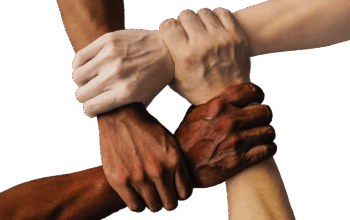Imagine walking into an office where every message gets lost in a sea of emails or scattered documents, and teamwork feels like a puzzle missing half its pieces. In today’s digitally driven world, open source workplace communication tools are the bridges connecting teams, breaking down silos, and making collaboration not just possible—but intuitive and efficient. Here’s a look at five trending open source projects that have been transforming the way companies and employees communicate in 2025, along with real-world success stories that make these solutions feel more like co-workers than just software.
Bitrix24: The All-in-One Work Hub Bitrix24 is the Swiss Army knife of workplace communication. It’s not just another chat app; it’s a full-fledged digital workspace where small teams can manage projects, assign tasks, and share files—all in one place. Picture a growing marketing agency where remote designers, writers, and strategists need to stay aligned. With Bitrix24, everyone gets instant updates, deadlines are visible to all, and all communications—video calls, chats, and documents—are just a click away. The platform recently helped a startup with only five employees keep track of client requests and internal workflows as if they were all in the same room.
Mattermost: Secure Team Chat, Built Your Way Mattermost is known as the open source answer to Slack. It offers secure messaging, voice calling, and even screen sharing—perfect for teams that want control over where their data lives. Take the example of a fintech company worried about data privacy. By self-hosting Mattermost, they could keep sensitive projects off cloud servers while still enabling engineers, compliance experts, and support staff to communicate in real time. The seamless integration with developer tools got them working together like a well-oiled machine, sharing code snippets and troubleshooting issues in the same conversation.
EXO: The Connective Tissue of the Digital Workplace EXO stands out by weaving together company news, team chats, calendars, forums, and even social features—almost like a company’s own private Facebook. For a mid-sized manufacturing firm, EXO became the go-to hub for everything from announcing safety updates to celebrating employee milestones. The open source mindset made it easy for their internal IT wizards to customize features and fit EXO perfectly into their unique culture. Employees started engaging more, and information spread faster than ever, simply because everyone could access what they needed from a single platform.
ONES Wiki: Knowledge Management with a Personal Touch ONES Wiki is where documentation and collaboration share the same digital home. Imagine a remote development team spread across three continents. Before, important procedures were scattered across emails and Google Docs. With ONES Wiki, they now have a centralized, searchable database for everything from coding guidelines to support scripts. The customizable permissions and AI-powered content generation help new team members get up to speed quickly, and the mind map feature offers visual clarity, simplifying complex ideas into easy-to-digest diagrams.
Clariti: Where Context Is King Clariti is unique because it lets teams bundle emails, chats, files, and calendar events together by topic, rather than splitting them by application. For a creative agency juggling multiple client projects, Clariti became the thread that tied everything together. When a client requested a last-minute change, the team could instantly see related emails, files, and previous conversations—all in one window. The “email in chat” feature, where important emails are embedded directly into the conversation, reduced confusion and helped everyone stay on the same page.
These projects demonstrate that open source tools can be the backbone of workplace communication, offering flexibility, security, and a sense of community. Whether you’re a global enterprise or a scrappy startup, there’s a digital workspace out there that fits your culture and your way of working.
References:
- https://www.goodfirms.co/intranet-software/blog/best-free-open-source-intranet-software
- https://holtz.com/blog/blog/free-webinar-on-june-17-re-invent-your-internal-communications-for-the-21st/%20
- https://clickup.com/blog/alternatives-to-slack/
- https://www.artswave.org/discover/jobs
- https://ones.com/blog/comparison/free-alternatives-confluence-comprehensive-comparison/
- https://upskillok.org
- https://learn.g2.com/best-employee-intranet-software
- https://natesnewsletter.substack.com/p/the-complete-microsoft-ai-copilot



